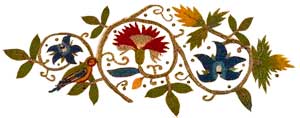
“The restrained, dignified style of the 1560’s and 70’s was in complete contrast to the style that emerged in the 1580’s, when male dress attained its most extreme and artificial shape. . . . It demanded a well-proportioned figure and long, shapely legs. The emphasis on an elongated, tapering waist, wide circular ruff and swollen hips and arms was common to both sexes and was indicative of the move towards a less aggressively masculine style.” Chapter Two,” Dress in the Age of Elizabeth I, Jane Ashelford, 1988
During the later years of Queen Elizabeth’s reign, fashions for young men had an androgynous look, at least among youthful courtiers whose portraits were painted. The Hilliard miniature above, identified by the Victoria and Albert Museum as Young Man Among the Roses, exemplifies this trend.

Jane Ashelford attributes the less rigidly masculine look in aristocratic male dress (at one point she uses the word “feminized”) as consequent of courtly behaviour toward the Queen, the writing of sonnets, and a new sense of male public presentation. The French and the Spanish, though politically enemies to varying degrees, had a huge influence on the new English fashion trends, as exemplified in this painting of King Charles IX of France.
Another factor was the rise of conspicuous consumption. Courtiers sold land to pay for their extensive and elegant wardrobes, and many were hugely in debt with their tailors and embroiderers.
Not surprisingly, fashion and colors changed often among those who attended Queen Elizabeth. Courtiers did not display their wealth simply by bedecking their wives in velvet and pearls; they wore such luxuries themselves.
When Kate Collins dressed in her brother’s clothes to run away to sea, she wore breeches and doublet, with a jerkin over and a shirt under. Breeches for the village class were usually of worsted, worn with stockings or hose. The doublet which Kate, now Alexander, wore would have been of wool since her father was prosperous, but a homespun cloth called kersey was ubiquitous among villagers, a lesser quality among the poor. Her jerkin was of leather, long unfashionable at court. Covering her newly shorn hair she wore a woolen cap. Even for those from a wealthy London family instead of from a village, sumptuary laws limited the fabrics, decoration, and styles which could be worn they lacked the status of nobility, regardless of their fortune.

Here’s Henry Wriothesley (pronounced ‘Risley), the Earl of Southampton, looked at a comparable age to Kate/Alexander.
And here he is when older: 
In my posts on Moll Frith, I spoke about women’s cross-dressing. In the seventeenth century, two pamphlets were published on the subject, Hic Mulier, the Man-Woman) and one in reply, Haec Vir, the Womanish Man. The Secret Player is set almost 30 years before they came out, when androgynous styles were common for men and no one protested in print. Other than elder august counselors in sober black, men displayed themselves. We joke about men in tights, called hose at the time, and note that their hose featured a padded codpiece.

The pumpkin-style bloomers we know from movies set in the day were seldom featured in portraits, although the second portrait of Southampton, above, does show a padded hip design over modified bloomers.
Sir Martin Frobisher, to the right, was a famous explorer but not a dashing man in Court.
In fashion as in much else, today’s assumptions did not necessarily hold in Shakespeare’s day. The contemporary androgynous look , common today, did not initially gain general approval. Frequently long-haired males in the sixties heard, “Is that a boy or a girl?” Not so in Elizabethan England, judging from the portraits. Indeed, only the most daring man would wear any of these clothes except to a costume party today. Clearly gender and to some extent sex were more fluid concepts for men in that era.
